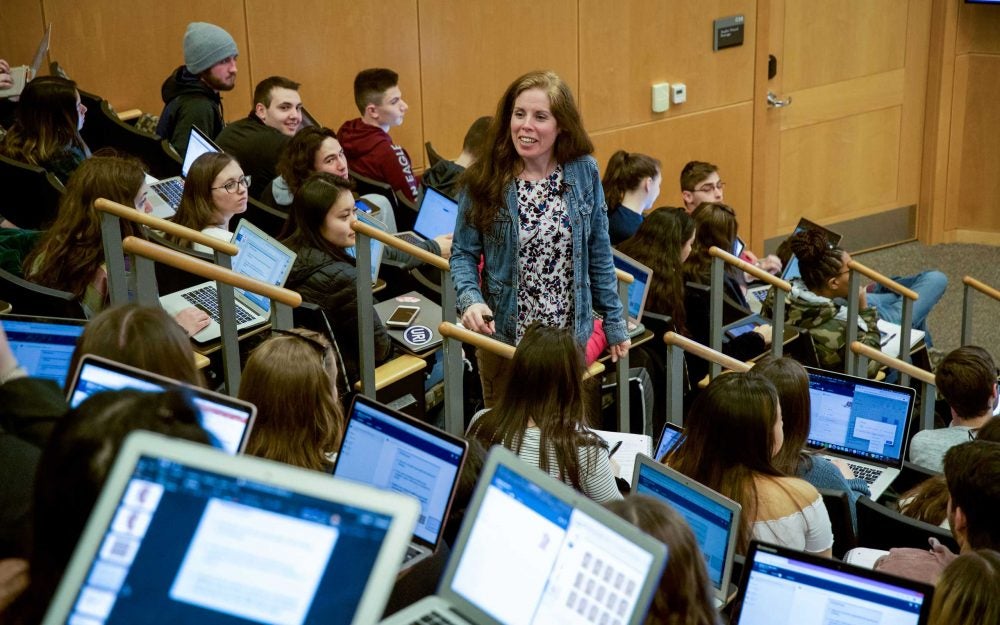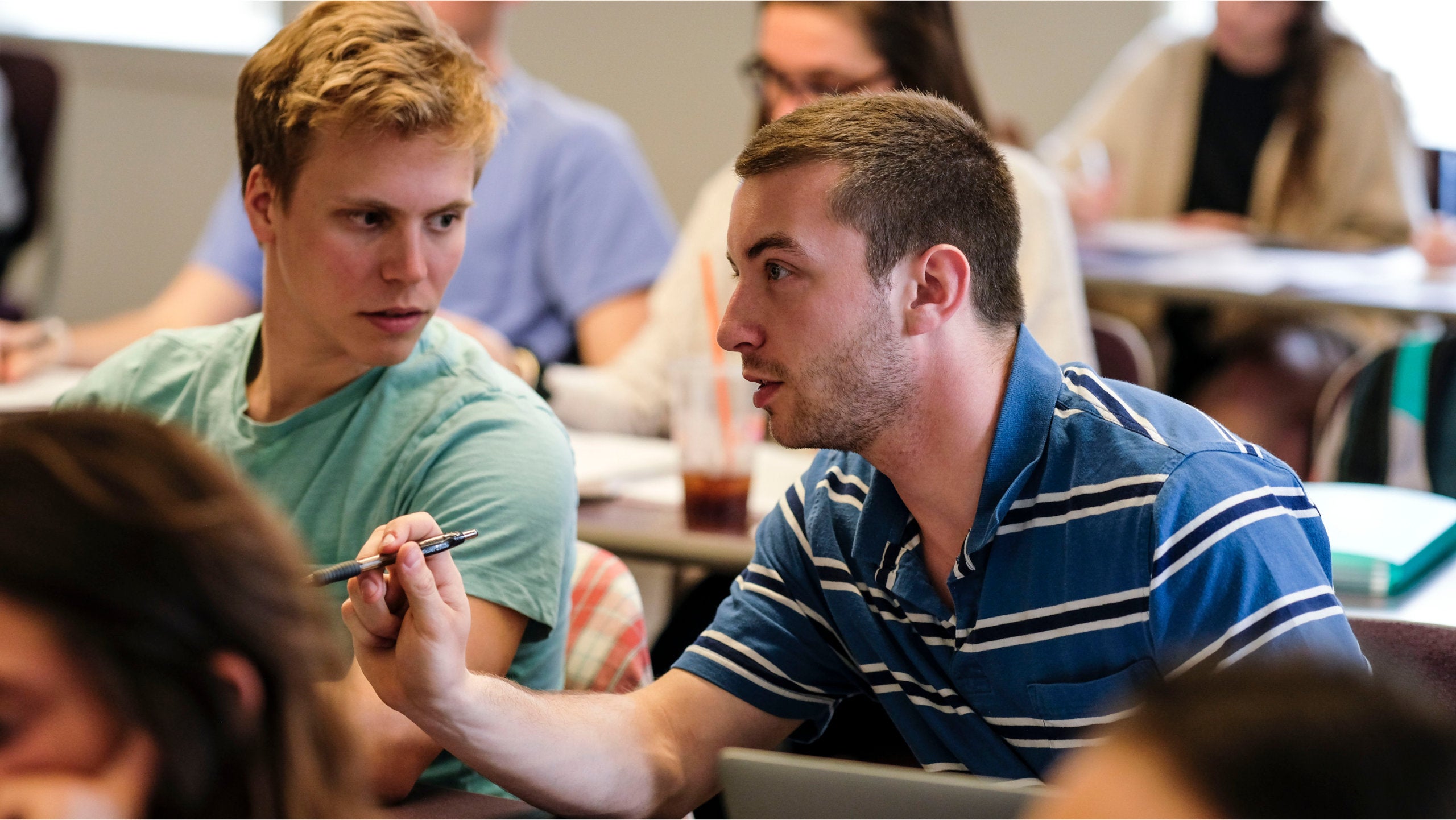
Lecturer Jessica Adams teaching her BIO 101 course
On the first day of a new semester, Jessica Adams opens her classes with the game Three Truths and a Lie, which asks players to suss out the lie in one of four statements.
Adams, a lecturer in the Department of Biological Sciences in the College of the Environment and Life Sciences, teaches anatomy and biology. Her three truths and a lie:
- I didn’t have a flushing toilet growing up.
- On my first date with my husband, we went skydiving.
- I ate bacon this morning.
- I failed college bio.
The lie: bacon.
Yes, Adams failed college biology. And she shares her experience with students to underscore what’s not going to happen in her classes—if she has her way. “It lets them know I’ve been there,” she says. “I’m telling them, you can overcome and be successful.”
Adams is looking to build a “creative community of learners.” To do that, the required text for the class has a free online version, so there is no economic barrier to student learning. Adams also uses Top Hat, a game-like, real-time question-and-answer app, to assess students’ comprehension of a topic in the moment.
There are “cultural competency assignments,” reflective writing prompts that have “nothing to do with the curriculum and everything to do with being a better human,” Adams says. “It wakes them up to their implicit biases.”
In Adams’ BIO 101 class, should a student fail their first exam, they have the option of completing special assignments on learning and study strategies and then taking a makeup exam to get their grade to a 70. Also, Adams doesn’t give exams back to students in class. Students must make an appointment to meet and discuss the exam during Adams’ office hours. In this way, Adams who teaches large classes is able to work with students on a one-on-one basis. “My college biology course had only two high-stakes assessments: a midterm and a final,” Adams recalls. “You didn’t know you were in trouble until it was too late.”
Sometimes it’s in the stumbling that real learning happens.
“Having students say, ‘I never thought of it that way,’ or, ‘That makes total sense, I get it now!’ is very rewarding. As a lifelong learner, I want to inspire my students to learn how to think and how to problem solve,” Adams says. “I want my students to become self-directed learners who gain the confidence and skills needed to succeed beyond my classroom.”

